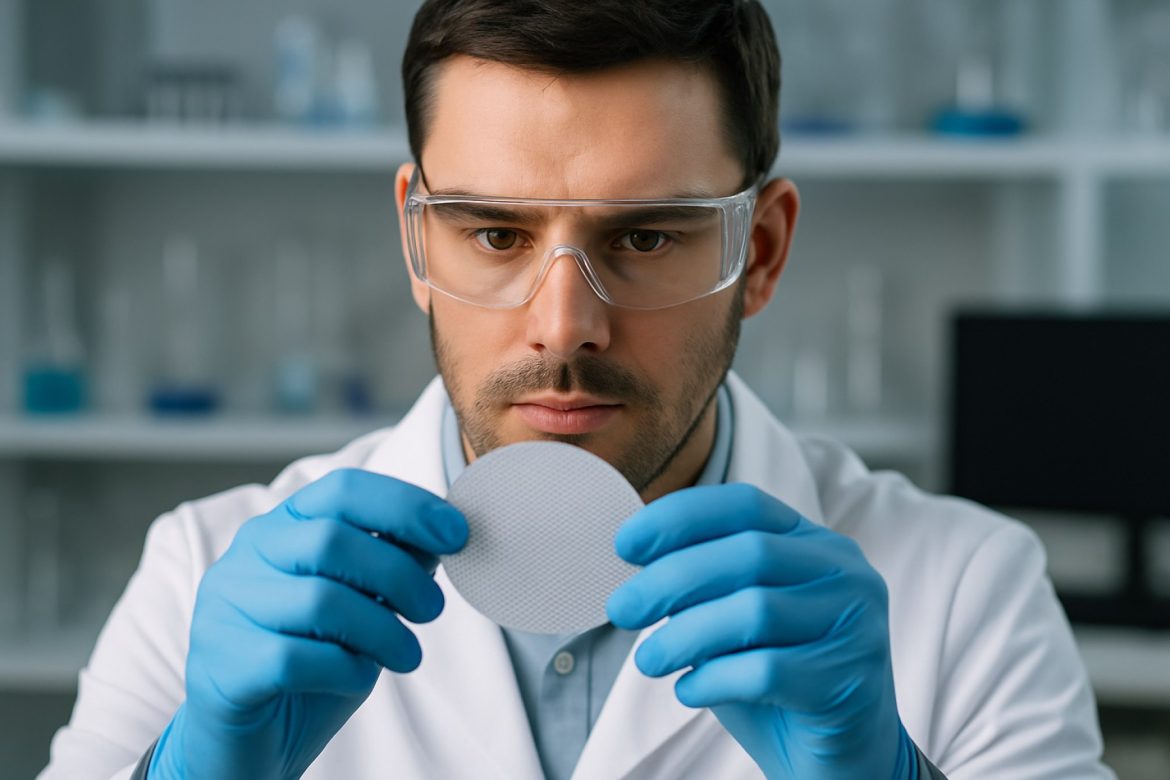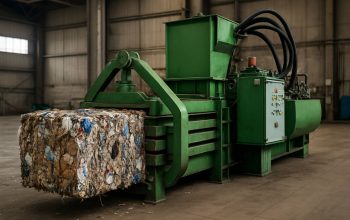Nanoporous Membrane Engineering in 2025: Unleashing Next-Gen Filtration, Energy, and Biotech Solutions. Explore How Advanced Materials and Precision Design Are Reshaping Global Industries.
- Executive Summary: 2025 Market Landscape and Key Drivers
- Technology Overview: Types and Fabrication of Nanoporous Membranes
- Major Applications: Water Treatment, Energy, Biomedicine, and Beyond
- Leading Companies and Industry Initiatives (e.g., milliporesigma.com, pall.com, asmemembrane.org)
- Market Size and Forecast (2025–2030): CAGR, Revenue, and Regional Trends
- Innovation Pipeline: Next-Generation Materials and Smart Membranes
- Sustainability and Regulatory Developments Impacting Adoption
- Competitive Analysis: Strategic Partnerships and M&A Activity
- Challenges: Scalability, Cost, and Performance Barriers
- Future Outlook: Disruptive Opportunities and Long-Term Growth Potential
- Sources & References
Executive Summary: 2025 Market Landscape and Key Drivers
The global landscape for nanoporous membrane engineering in 2025 is characterized by rapid technological advancements, expanding industrial applications, and a growing emphasis on sustainability. Nanoporous membranes—engineered with pore sizes typically below 100 nanometers—are increasingly pivotal in sectors such as water purification, pharmaceuticals, energy, and advanced manufacturing. The market is being shaped by a convergence of factors: rising demand for high-efficiency filtration, stricter environmental regulations, and the need for resource-efficient separation technologies.
Key industry players are accelerating innovation to address these demands. Merck KGaA (operating as MilliporeSigma in North America) continues to expand its portfolio of nanoporous membranes for bioprocessing and laboratory filtration, leveraging proprietary polymer and ceramic technologies. Pall Corporation, a subsidiary of Danaher, is advancing membrane solutions for critical applications in healthcare, food and beverage, and microelectronics, focusing on both polymeric and inorganic nanoporous materials. Sartorius AG is also investing in next-generation membrane platforms, particularly for single-use bioprocessing and virus filtration, responding to the biopharmaceutical sector’s stringent purity requirements.
In 2025, the water treatment sector remains a primary driver, with nanoporous membranes enabling more efficient desalination, wastewater recycling, and contaminant removal. Companies such as Toray Industries, Inc. and Kuraray Co., Ltd. are scaling up production of advanced reverse osmosis and nanofiltration membranes, targeting municipal and industrial water markets worldwide. The push for circular water use and zero-liquid discharge in manufacturing is further accelerating adoption.
Emerging applications are also gaining traction. In energy, nanoporous membranes are integral to next-generation batteries and fuel cells, with firms like Asahi Kasei Corporation developing specialized separators for lithium-ion and flow batteries. In pharmaceuticals, the precision offered by nanoporous membranes is enabling new modalities in drug delivery and diagnostics.
Looking ahead, the market outlook for nanoporous membrane engineering is robust. Ongoing R&D into novel materials—such as graphene-based and hybrid organic-inorganic membranes—promises to unlock further performance gains. Strategic collaborations between membrane manufacturers and end-users are expected to accelerate commercialization cycles. As regulatory and sustainability pressures mount, the sector is poised for continued growth, with leading companies investing in both capacity expansion and next-generation product development.
Technology Overview: Types and Fabrication of Nanoporous Membranes
Nanoporous membrane engineering is a rapidly advancing field, with significant developments in both the types of membranes available and the fabrication techniques employed. As of 2025, the industry is witnessing a shift towards membranes with precisely controlled pore sizes, enhanced selectivity, and improved mechanical and chemical stability. These advances are driven by the growing demand in sectors such as water purification, gas separation, energy storage, and biomedical applications.
The primary types of nanoporous membranes include polymeric, ceramic, metallic, and hybrid membranes. Polymeric membranes, such as those based on polyethersulfone (PES), polyvinylidene fluoride (PVDF), and polyacrylonitrile (PAN), remain widely used due to their processability and cost-effectiveness. Companies like Membrana (now part of 3M) and Pall Corporation are recognized for their extensive portfolios in polymeric membrane technologies, offering products for microfiltration, ultrafiltration, and nanofiltration.
Ceramic membranes, typically composed of materials such as alumina, zirconia, or titania, are valued for their robustness and resistance to harsh chemical environments. Mott Corporation and Mecana are notable for their expertise in sintered metal and ceramic membrane fabrication, supplying solutions for industrial filtration and gas separation. Metallic nanoporous membranes, though less common, are gaining traction for specialized applications requiring high thermal and mechanical stability.
Hybrid membranes, which combine organic and inorganic components, are an area of intense research and commercialization. These membranes aim to leverage the advantages of both material classes, offering tunable selectivity and enhanced durability. Evonik Industries is actively developing hybrid membrane technologies, particularly for gas separation and pervaporation processes.
Fabrication techniques have evolved to enable precise control over pore size and distribution at the nanoscale. Phase inversion, track-etching, electrospinning, and sol-gel processes are among the most widely adopted methods. Recent years have seen the emergence of advanced techniques such as atomic layer deposition (ALD) and 3D printing, which allow for the creation of membranes with highly uniform and customizable nanoporous structures. Companies like Nanocs are pioneering the use of nanofabrication methods to produce membranes with tailored functionalities for research and industrial use.
Looking ahead, the nanoporous membrane sector is expected to benefit from continued innovation in materials science and nanotechnology. The integration of artificial intelligence and machine learning into membrane design and process optimization is anticipated to accelerate the development of next-generation membranes with unprecedented performance characteristics. As sustainability and resource efficiency become increasingly important, the industry focus will likely shift towards greener fabrication methods and recyclable membrane materials.
Major Applications: Water Treatment, Energy, Biomedicine, and Beyond
Nanoporous membrane engineering is rapidly advancing, with 2025 poised to be a pivotal year for its application across water treatment, energy, biomedicine, and other sectors. The unique ability of nanoporous membranes to selectively filter molecules based on size, charge, or chemical affinity is driving innovation and commercialization in these fields.
In water treatment, nanoporous membranes are at the forefront of desalination and wastewater purification. Companies such as Toray Industries and DuPont are scaling up production of advanced reverse osmosis (RO) and nanofiltration membranes, focusing on higher permeability, fouling resistance, and energy efficiency. In 2025, the integration of graphene oxide and other 2D materials is expected to further enhance membrane performance, enabling more sustainable and cost-effective water reuse and desalination systems. SUEZ and Veolia are also investing in pilot projects that deploy next-generation membranes for municipal and industrial water treatment, aiming to address global water scarcity and stricter regulatory standards.
In the energy sector, nanoporous membranes are enabling breakthroughs in hydrogen production, fuel cells, and battery technologies. Asahi Kasei is developing ion-exchange membranes for electrolyzers, targeting improved hydrogen purity and reduced operational costs. Meanwhile, W. L. Gore & Associates is advancing proton exchange membranes (PEMs) for fuel cells, with a focus on durability and high conductivity. These innovations are critical as governments and industries accelerate the transition to low-carbon energy systems in the coming years.
Biomedicine is another area where nanoporous membranes are making significant strides. Companies like Merck KGaA (operating as MilliporeSigma in the US and Canada) are supplying membranes for drug delivery, hemodialysis, and biosensing applications. The precision and biocompatibility of engineered nanopores are enabling more effective separation of biomolecules, targeted drug release, and real-time diagnostics. In 2025, the convergence of membrane technology with microfluidics and wearable devices is expected to open new frontiers in personalized medicine and point-of-care testing.
Beyond these major sectors, nanoporous membranes are being explored for gas separation, food and beverage processing, and environmental remediation. Companies such as Pall Corporation and GEA Group are expanding their membrane portfolios to address emerging needs in these industries. Looking ahead, the next few years will likely see increased collaboration between material scientists, engineers, and end-users to tailor membrane properties for specific applications, supported by advances in nanofabrication and computational modeling.
Leading Companies and Industry Initiatives (e.g., milliporesigma.com, pall.com, asmemembrane.org)
The field of nanoporous membrane engineering is witnessing significant advancements in 2025, driven by both established industry leaders and innovative new entrants. These membranes, characterized by pore sizes in the nanometer range, are critical for applications in water purification, bioprocessing, gas separation, and energy storage. The global push for sustainable solutions and stricter regulatory standards is accelerating the adoption and development of advanced nanoporous membranes.
Among the most prominent companies, Merck KGaA (operating as MilliporeSigma in the US and Canada) continues to be a major force in membrane technology. The company’s portfolio includes a wide range of nanoporous membranes for laboratory, industrial, and pharmaceutical applications. In 2025, Merck KGaA is expanding its manufacturing capabilities and investing in R&D to enhance membrane selectivity and durability, particularly for biopharmaceutical filtration and virus removal. Their focus on sustainability is evident in the development of membranes with reduced environmental impact and improved recyclability.
Another key player, Pall Corporation, a subsidiary of Danaher Corporation, is recognized for its innovations in filtration, separation, and purification technologies. Pall’s nanoporous membranes are widely used in healthcare, food and beverage, and industrial sectors. In recent years, the company has launched new membrane products with enhanced fouling resistance and higher throughput, addressing the growing demand for efficient water treatment and ultrapure water production. Their ongoing collaborations with academic and industrial partners aim to accelerate the commercialization of next-generation nanoporous materials.
Industry organizations such as the American Society of Membrane Science and Engineering (ASME Membrane) play a pivotal role in fostering collaboration, standardization, and knowledge exchange. In 2025, ASME Membrane is spearheading initiatives to establish best practices for nanoporous membrane testing and performance benchmarking, which are crucial for ensuring product reliability and regulatory compliance across sectors.
Emerging companies are also making their mark. For example, Nanostone Water specializes in ceramic nanoporous membranes for municipal and industrial water treatment, offering solutions with high chemical resistance and long operational lifespans. Their recent projects demonstrate the scalability and robustness of advanced ceramic membrane systems in challenging environments.
Looking ahead, the industry is expected to see further integration of digital monitoring and process automation, enabling real-time performance tracking and predictive maintenance of membrane systems. The convergence of material science, nanotechnology, and data analytics is set to drive the next wave of innovation, with leading companies and industry bodies at the forefront of these developments.
Market Size and Forecast (2025–2030): CAGR, Revenue, and Regional Trends
The global market for nanoporous membrane engineering is poised for robust growth between 2025 and 2030, driven by escalating demand in water treatment, pharmaceuticals, energy, and advanced manufacturing. As of 2025, the sector is witnessing increased adoption of high-performance membranes for ultrafiltration, nanofiltration, and gas separation, with a particular emphasis on sustainability and energy efficiency.
Industry leaders such as Merck KGaA (operating as MilliporeSigma in North America), Pall Corporation (a Danaher company), and Sartorius AG are at the forefront, supplying advanced nanoporous membranes for bioprocessing, laboratory, and industrial applications. These companies are investing in R&D to enhance membrane selectivity, fouling resistance, and scalability, responding to the growing needs of biopharmaceutical manufacturing and next-generation water purification.
The Asia-Pacific region is expected to register the fastest CAGR, propelled by rapid industrialization, urbanization, and government initiatives for clean water and environmental protection. China, Japan, and South Korea are investing heavily in membrane-based desalination and wastewater recycling projects. For instance, Toray Industries, Inc. and Kuraray Co., Ltd. are expanding their production capacities and developing new polymeric and ceramic nanoporous membranes tailored for regional requirements.
In North America and Europe, the focus is shifting toward high-value applications such as pharmaceutical purification, hydrogen production, and carbon capture. Companies like Evonik Industries AG are commercializing innovative membrane materials, including polyimide and silica-based nanoporous structures, to address the stringent demands of gas separation and specialty chemical processing.
Revenue projections for the global nanoporous membrane market indicate a compound annual growth rate (CAGR) in the high single digits through 2030, with total market value expected to surpass several billion USD by the end of the forecast period. The market outlook is further buoyed by regulatory pressures for cleaner industrial processes and the ongoing transition to circular economy models, which prioritize resource recovery and waste minimization.
Looking ahead, the next few years will likely see intensified collaboration between membrane manufacturers, end-users, and research institutions to accelerate the commercialization of next-generation nanoporous membranes. Advances in materials science, such as the integration of graphene and metal-organic frameworks (MOFs), are anticipated to unlock new performance benchmarks and expand the addressable market across regions and industries.
Innovation Pipeline: Next-Generation Materials and Smart Membranes
Nanoporous membrane engineering is at the forefront of next-generation materials innovation, with 2025 marking a pivotal year for both academic and industrial advancements. These membranes, characterized by pore sizes in the nanometer range, are enabling breakthroughs in water purification, gas separation, energy storage, and biomedical applications. The innovation pipeline is being driven by a convergence of materials science, nanotechnology, and digital process control, resulting in membranes with unprecedented selectivity, permeability, and functional tunability.
A key trend in 2025 is the scaling of advanced nanomaterials such as graphene oxide, metal-organic frameworks (MOFs), and covalent organic frameworks (COFs) for commercial membrane production. Companies like Evonik Industries are actively developing and marketing high-performance membranes based on polyimide and other advanced polymers, with ongoing research into incorporating nanoporous structures for enhanced gas separation and solvent-resistant applications. Similarly, SUEZ and Toray Industries are investing in the integration of nanostructured materials into their membrane product lines, targeting both water treatment and industrial process streams.
Recent data from industry collaborations indicate that nanoporous membranes are achieving record-breaking performance metrics. For example, graphene-based membranes have demonstrated water flux rates several times higher than conventional polymeric membranes, while maintaining high salt rejection rates—an achievement that is accelerating their adoption in desalination and ultrapure water production. Toray Industries, a global leader in membrane technology, has reported ongoing pilot projects utilizing nanostructured membranes for both municipal and industrial clients, with commercial rollouts anticipated within the next two years.
Smart membranes—those capable of responding to environmental stimuli or integrating digital sensing—are also moving from laboratory prototypes to early-stage commercialization. Companies such as Evonik Industries are exploring membranes embedded with sensors for real-time monitoring of fouling, permeability, and chemical composition, enabling predictive maintenance and process optimization. This aligns with broader trends in Industry 4.0, where digitalization and materials innovation converge to create intelligent, adaptive filtration systems.
Looking ahead, the outlook for nanoporous membrane engineering is robust. The next few years are expected to see further breakthroughs in scalable manufacturing, hybrid material integration, and the deployment of smart, self-healing, or anti-fouling membranes. Strategic partnerships between material suppliers, membrane manufacturers, and end-users will be critical in translating laboratory advances into commercial products. As regulatory and sustainability pressures mount, the demand for high-efficiency, low-energy separation technologies will continue to drive investment and innovation in this sector.
Sustainability and Regulatory Developments Impacting Adoption
The adoption of nanoporous membrane engineering is increasingly shaped by sustainability imperatives and evolving regulatory frameworks, particularly as industries seek to address water scarcity, reduce energy consumption, and minimize environmental impact. In 2025, the focus on sustainable manufacturing and end-of-life management of membranes is intensifying, with both governmental and industry-led initiatives driving innovation and compliance.
A key sustainability driver is the push for circular economy principles in membrane production and disposal. Leading manufacturers such as Toray Industries and DuPont are investing in greener feedstocks, solvent-free fabrication processes, and recyclable membrane modules. For example, Toray Industries has announced targets to reduce greenhouse gas emissions across its membrane product lines, aligning with global climate goals. Similarly, DuPont is developing membranes with enhanced durability and recyclability, aiming to extend product lifecycles and reduce landfill waste.
Regulatory developments are also accelerating the adoption of advanced nanoporous membranes. The European Union’s Green Deal and the U.S. Environmental Protection Agency’s tightening of water quality standards are prompting industries to upgrade to more efficient separation technologies. In 2025, compliance with stricter discharge limits for micropollutants and emerging contaminants is expected to drive demand for high-selectivity membranes, particularly in municipal water treatment and industrial wastewater sectors. Companies like SUEZ and Veolia are actively collaborating with regulators and utilities to deploy next-generation membrane systems that meet or exceed these new standards.
Sustainability certifications and eco-labels are gaining traction as procurement criteria, especially in the food & beverage and pharmaceutical industries. Organizations such as the Water Quality Association are updating certification schemes to include lifecycle assessments and carbon footprint metrics for membrane products. This trend is encouraging manufacturers to transparently report environmental performance and invest in third-party validation.
Looking ahead, the convergence of sustainability goals and regulatory requirements is expected to further accelerate the adoption of nanoporous membrane technologies. Industry leaders are likely to prioritize R&D in biodegradable and bio-based membranes, while digital monitoring tools will support compliance and optimize operational efficiency. As global water and energy challenges intensify, the role of nanoporous membrane engineering in enabling sustainable industrial processes and resource recovery will become increasingly central.
Competitive Analysis: Strategic Partnerships and M&A Activity
The nanoporous membrane engineering sector is experiencing a dynamic phase of consolidation and collaboration as companies seek to accelerate innovation, expand market reach, and address the growing demand for advanced filtration solutions across water treatment, energy, and bioprocessing. In 2025, strategic partnerships and mergers & acquisitions (M&A) are shaping the competitive landscape, with both established players and emerging innovators actively pursuing synergistic opportunities.
A notable trend is the increasing collaboration between membrane manufacturers and end-user industries. For example, DuPont, a global leader in membrane technology, has continued to strengthen its position through targeted acquisitions and joint ventures, particularly in the water purification and specialty separation markets. The company’s integration of advanced nanomaterial capabilities has enabled the development of next-generation nanoporous membranes with enhanced selectivity and durability.
Similarly, Toray Industries, Inc., recognized for its expertise in polymer chemistry and membrane production, has expanded its global footprint through strategic alliances with regional water utilities and industrial partners. These collaborations are aimed at co-developing customized membrane solutions for challenging applications, such as seawater desalination and industrial wastewater treatment.
In the energy sector, SUEZ has been active in forming partnerships with technology startups specializing in nanoporous materials, seeking to leverage novel membrane architectures for improved gas separation and carbon capture. This approach not only accelerates product development but also positions SUEZ at the forefront of sustainable process engineering.
Emerging companies are also playing a pivotal role in driving innovation through cross-sector partnerships. For instance, Nanostone Water has entered into agreements with municipal water authorities and industrial clients to pilot its ceramic nanoporous membrane systems, which offer superior fouling resistance and operational longevity compared to conventional polymeric membranes.
Looking ahead, the competitive landscape is expected to witness further consolidation as companies seek to secure intellectual property, scale manufacturing, and access new markets. The increasing complexity of regulatory requirements and the need for integrated solutions are likely to drive more joint ventures and technology licensing agreements. As digitalization and process automation become more prevalent, partnerships between membrane engineers and digital solution providers are anticipated to emerge, further enhancing the value proposition of nanoporous membrane technologies.
Overall, the next few years will likely see intensified M&A activity and strategic alliances, as both established and emerging players in nanoporous membrane engineering position themselves to capitalize on expanding global demand and evolving application requirements.
Challenges: Scalability, Cost, and Performance Barriers
Nanoporous membrane engineering stands at the forefront of advanced separation technologies, yet the sector faces persistent challenges in scalability, cost, and performance as it moves through 2025 and into the coming years. While laboratory-scale demonstrations have showcased remarkable selectivity and permeability, translating these results into industrial-scale applications remains a significant hurdle.
One of the primary challenges is the scalable fabrication of defect-free nanoporous membranes. Techniques such as atomic layer deposition, block copolymer self-assembly, and advanced lithography have enabled precise control over pore size and distribution at the nanoscale. However, these methods often involve complex, time-consuming, and expensive processes that are difficult to adapt for mass production. For example, Merck KGaA and MilliporeSigma (the U.S. and Canada life science business of Merck KGaA) are recognized for their high-performance filtration membranes, but scaling up nanoporous variants with consistent quality remains a technical and economic challenge.
Cost is another critical barrier. The use of advanced materials such as graphene, metal-organic frameworks (MOFs), and tailored polymers can significantly enhance membrane performance, but these materials are often expensive to synthesize and process. Companies like Nanopareil and Novasep are actively developing next-generation membranes, yet the high cost of raw materials and fabrication limits widespread adoption, especially in cost-sensitive sectors such as water treatment and large-scale industrial separations.
Performance stability and fouling resistance also present ongoing obstacles. While nanoporous membranes can achieve high selectivity, maintaining long-term operational stability in harsh chemical or biological environments is challenging. Fouling—where membrane pores become blocked by contaminants—remains a major cause of performance degradation and increased operational costs. Industry leaders such as Pall Corporation and Sartorius AG are investing in surface modification and anti-fouling technologies, but robust, universally applicable solutions are still under development.
Looking ahead, the outlook for overcoming these barriers is cautiously optimistic. Collaborative efforts between industry and academia are accelerating the development of scalable manufacturing techniques and cost-effective materials. Initiatives by organizations like American Elements to supply advanced nanomaterials, and the push for automation in membrane fabrication, are expected to drive down costs and improve consistency. However, widespread commercial deployment of nanoporous membranes will likely depend on further breakthroughs in both materials science and process engineering over the next several years.
Future Outlook: Disruptive Opportunities and Long-Term Growth Potential
Nanoporous membrane engineering is poised for significant transformation in 2025 and the coming years, driven by advances in materials science, manufacturing scalability, and the urgent need for sustainable solutions in water treatment, energy, and bioprocessing. The sector is witnessing a convergence of nanotechnology and precision fabrication, enabling membranes with highly tunable pore sizes, enhanced selectivity, and improved fouling resistance. These innovations are expected to disrupt traditional separation processes and unlock new markets.
A key area of opportunity lies in water purification and desalination. Companies such as DuPont and Toray Industries are investing in next-generation reverse osmosis and nanofiltration membranes, leveraging nanoporous architectures to achieve higher flux and lower energy consumption. In 2025, pilot projects are anticipated to demonstrate the viability of graphene oxide and other 2D-material-based membranes, which promise order-of-magnitude improvements in permeability and selectivity. The scalability of these materials, however, remains a challenge, with ongoing efforts to transition from laboratory synthesis to industrial-scale roll-to-roll manufacturing.
In the energy sector, nanoporous membranes are gaining traction for hydrogen production and carbon capture. Air Liquide and Evonik Industries are developing polymeric and hybrid inorganic-organic membranes for gas separation, targeting applications in blue and green hydrogen value chains. The ability to selectively separate hydrogen from mixed gas streams with minimal energy input is expected to be a game-changer for clean energy infrastructure. Early-stage deployments in 2025 will inform the commercial viability and long-term cost competitiveness of these solutions.
Bioprocessing and pharmaceutical manufacturing also stand to benefit from advances in nanoporous membrane engineering. Companies like Merck KGaA (operating as MilliporeSigma in the US and Canada) are expanding their membrane portfolios to support high-throughput, single-use filtration systems for biologics and cell therapies. The precision control over pore size and surface chemistry enables more efficient separation of proteins, viruses, and other biomolecules, supporting the rapid growth of advanced therapeutics.
Looking ahead, the long-term growth potential of nanoporous membrane engineering will depend on overcoming challenges related to durability, cost, and integration with digital monitoring systems. Industry leaders are increasingly collaborating with academic institutions and startups to accelerate innovation cycles. As regulatory frameworks evolve to support water reuse, decarbonization, and advanced manufacturing, the sector is well-positioned for disruptive growth, with the potential to reshape critical infrastructure and enable new business models across multiple industries.
Sources & References
- Pall Corporation
- Sartorius AG
- Kuraray Co., Ltd.
- Asahi Kasei Corporation
- Evonik Industries
- DuPont
- SUEZ
- Veolia
- W. L. Gore & Associates
- GEA Group
- Nanostone Water
- Water Quality Association
- American Elements
- Air Liquide



